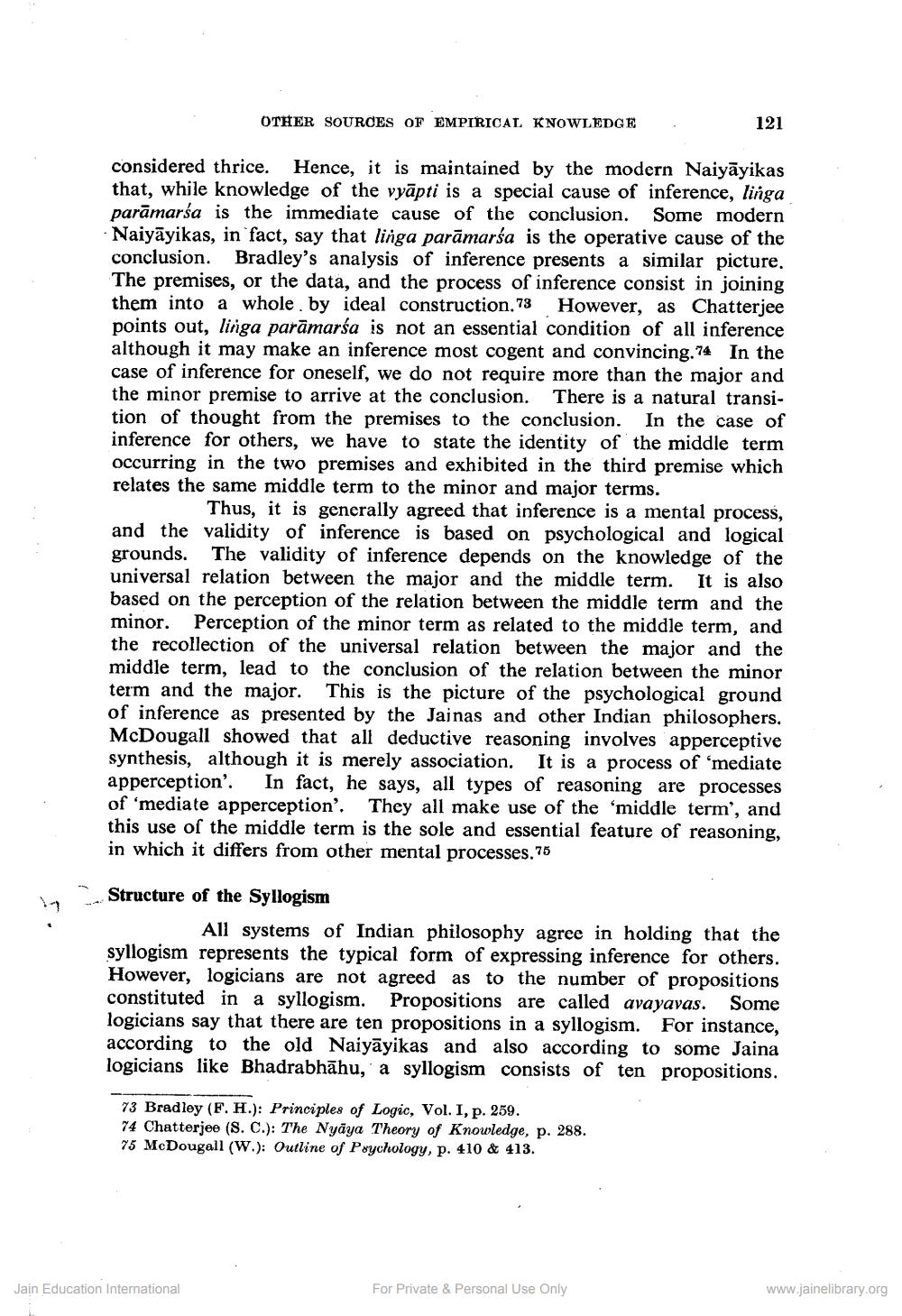________________
OTHER SOURCES OF EMPIRICAL KNOWLEDGE
121
considered thrice. Hence, it is maintained by the modern Naiyāyikas that, while knowledge of the vyāpti is a special cause of inference, linga parāmarśa is the immediate cause of the conclusion. Some modern Naiyāyikas, in fact, say that linga parāmarśa is the operative cause of the conclusion. Bradley's analysis of inference presents a similar picture. The premises, or the data, and the process of inference consist in joining them into a whole, by ideal construction.73 However, as Chatterjee points out, linga parāmarśa is not an essential condition of all inference although it may make an inference most cogent and convincing. 74 In the case of inference for oneself, we do not require more than the major and the minor premise to arrive at the conclusion. There is a natural transition of thought from the premises to the conclusion. In the case of inference for others, we have to state the identity of the middle term occurring in the two premises and exhibited in the third premise which relates the same middle term to the minor and major terms.
Thus, it is generally agreed that inference is a mental process, and the validity of inference is based on psychological and logical grounds. The validity of inference depends on the knowledge of the universal relation between the major and the middle term. It is also based on the perception of the relation between the middle term and the minor. Perception of the minor term as related to the middle term, and the recollection of the universal relation between the major and the middle term, lead to the conclusion of the relation between the minor term and the major. This is the picture of the psychological ground of inference as presented by the Jajnas and other Indian philosophers. McDougall showed that all deductive reasoning involves apperceptive synthesis, although it is merely association. It is a process of 'mediate apperception'. In fact, he says, all types of reasoning are processes of 'mediate apperception'. They all make use of the 'middle term', and this use of the middle term is the sole and essential feature of reasoning, in which it differs from other mental processes. 78
Structure of the Syllogism
All systems of Indian philosophy agree in holding that the syllogism represents the typical form of expressing inference for others. However, logicians are not agreed as to the number of propositions constituted in a syllogism. Propositions are called avayavas. Some logicians say that there are ten propositions in a syllogism. For instance, according to the old Naiyāyikas and also according to some Jaina logicians like Bhadrabhāhu, a syllogism consists of ten propositions.
73 Bradley (F. H.): Principles of Logic, Vol. I, p. 259. 74 Chatterjee (S. C.): The Nyāya Theory of Knowledge, p. 288. 75 McDougall (W): Outline of Psychology, p. 410 & 413.
Jain Education International
For Private & Personal Use Only
www.jainelibrary.org




